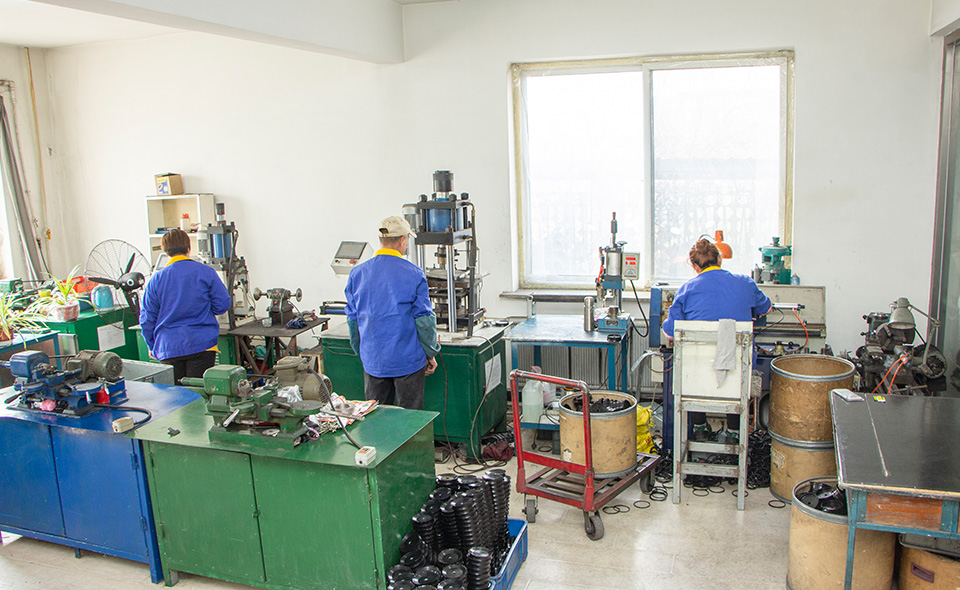Seal rings, also known as O-rings, represent a fundamental yet incredibly versatile component in the realm of engineering and manufacturing. These seemingly simple circular rings, typically made from elastomeric materials like rubber, silicone, or various synthetic compounds, serve as indispensable seals in a vast array of applications across industries.
The design of seal rings is elegantly straightforward yet ingeniously effective. Their circular shape, often resembling a doughnut, allows them to fit seamlessly within grooves or cavities, creating a secure, tight seal when compressed between mating surfaces. This simple yet efficient design grants seal rings the ability to prevent the leakage of fluids or gases while also protecting against the ingress of contaminants.
The applications of seal rings span across industries, showcasing their adaptability and reliability. In automotive systems, these rings are vital components, employed in engines, transmissions, fuel systems, and hydraulic systems. They seal connections in various engine components, ensuring the containment of fluids and maintaining optimal performance. Moreover, in automotive air conditioning systems, seal rings play a critical role in preventing refrigerant leaks, contributing to efficient cooling.
Similarly, in aerospace and aviation, where precision and reliability are paramount, seal rings find extensive use in hydraulic systems, fuel systems, and aircraft engines. Their ability to withstand extreme temperatures, pressure differentials, and harsh environments is crucial for ensuring the integrity and safety of critical components in these industries.
Moreover, the industrial sector heavily relies on seal rings in machinery and equipment. Whether in heavy-duty hydraulic systems, pneumatic tools, or manufacturing machinery, these rings act as essential barriers, preventing leaks and ensuring the efficient operation of diverse systems. Their resilience to wear and tear, along with their compatibility with various fluids and chemicals, make them indispensable in industrial settings.
The medical and pharmaceutical industries also benefit from the use of seal rings in equipment such as pumps, valves, and medical devices. Seal rings, designed to meet stringent hygiene and safety standards, play a crucial role in preventing contamination and ensuring the integrity of critical processes and applications.
The effectiveness of seal rings lies not only in their design but also in the materials from which they are crafted. Continuous advancements in elastomeric materials and manufacturing processes have led to the development of specialized seal ring compositions tailored to specific applications. These materials exhibit enhanced resistance to temperature extremes, chemicals, abrasion, and wear, ensuring prolonged durability and reliability.
Furthermore, the precise engineering of seal rings extends beyond their physical properties. Computational modeling and simulation techniques aid in optimizing their designs for various conditions, allowing for better performance and longevity. Additionally, innovations in seal ring coatings and surface treatments enhance their sealing capabilities, further fortifying their effectiveness in challenging environments.
Looking toward the future, the evolution of seal rings continues through ongoing research and development efforts. Scientists and engineers explore eco-friendly materials, bio-based compounds, and sustainable manufacturing processes to align with the growing emphasis on environmental sustainability. Additionally, advancements in additive manufacturing technologies promise to revolutionize the production of seal rings, enabling rapid prototyping and customization for specific applications.
The humble yet incredibly versatile seal ring stands as a linchpin in ensuring the reliability, efficiency, and safety of a wide spectrum of systems and applications. Their ability to provide a dependable seal against leaks while withstanding diverse environmental challenges underscores their indispensable role across industries, driving innovation and progress in engineering and manufacturing realms worldwide.








